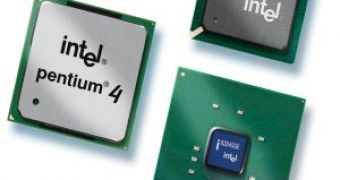Advanced Micro Devices plans to integrate at some point or another the central and the graphics processing units into a single package, a move that should allow the hardware manufacturing company to offer a much more performance centered integrated graphics platform, while at the same time, the ''Fusion'' as the project is called, should provide a big boost while dealing with parallel algorithms that are not graphics related.
Well, of course that Intel can not let AMD gain for itself an entire market segment as that would spell trouble for the big company in the long run, so at the Intel Developer Forum, Paul Otellini said that his company plans to build a somewhat similar device that should, according to the news site bit-tech, increase integrated graphics performance tenfold by 2010.
Traditionally, Intel did not invest too much R&D and effort into its integrated graphics platform as that kind of solution was never meant to be very performance centered in the first place and currently its IGP hardware is based on the 90 nanometer fabrication process while the rest of its product line use much newer technologies. Intel's CEO said that soon integrated graphics solutions from his company will arrive based on the 65nm fabrication process in an attempt to double the performance level.
As currently Intel's integrated graphics solutions are relatively cheap they are also performing at very low level of performance, so doubling that very low level still does not mean being able to play a newer game at a decent resolutions or at above ''very low'' quality settings.
This situation may change in 2009 when the big company plans to par its graphics solutions and its central processing units, as the two will be built using the same technology and the IGP will be integrated into the processor, closely following AMD's model. By 2009 Intel plans to have integrated processing units closely linked to the central processing ones and the performance gain should be around six times over the current level with hopes that it will reach a tenfold increase in 2010 when the 32nm building process will be used on a large scale.

 14 DAY TRIAL //
14 DAY TRIAL //